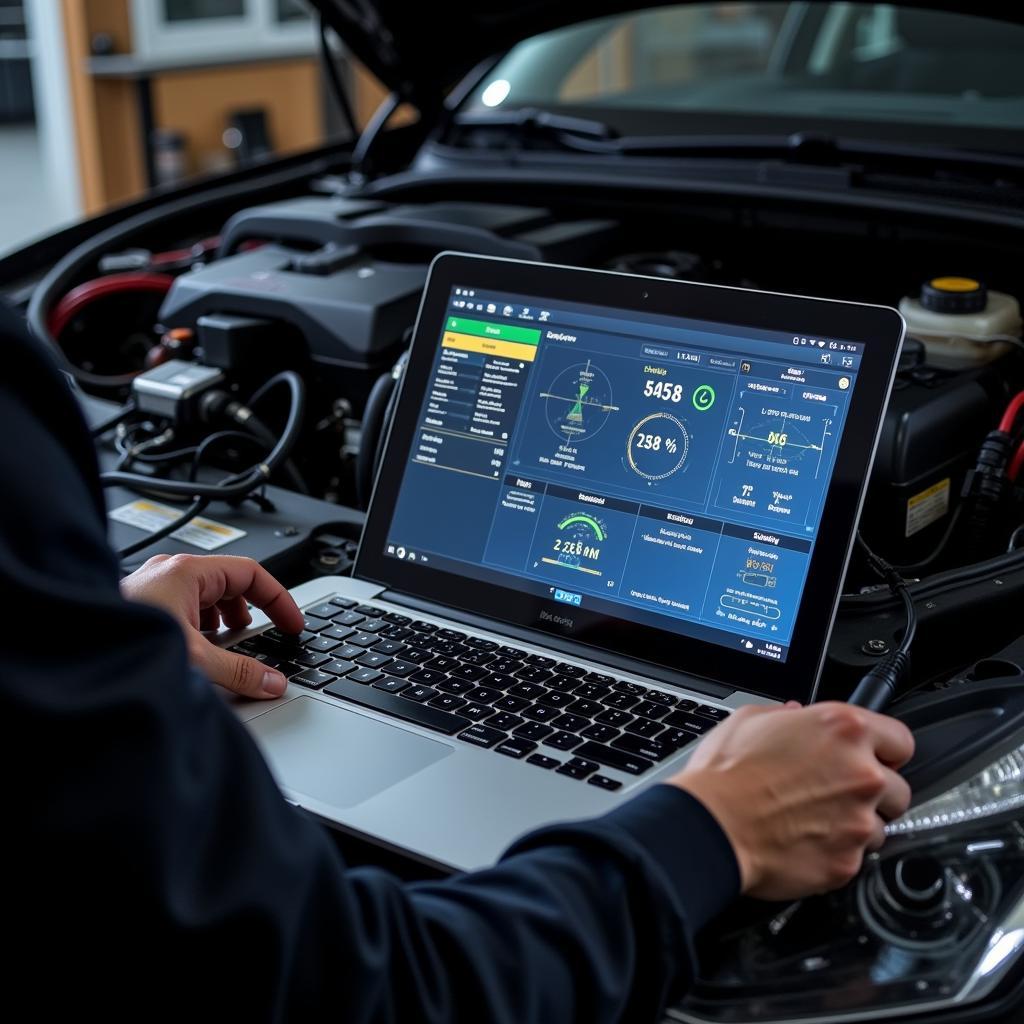Choosing the right car diagnostic tool can feel overwhelming. With so many options available, how do you know which one is best suited for your needs? This guide will walk you through the essential steps to select the correct car diagnostic model, ensuring you get the most accurate diagnostics and the best value for your money.
Understanding Your Diagnostic Needs
Before diving into the specifics of car diagnostic tools, it’s crucial to assess your requirements. What kind of vehicles do you work with most often? Are you a professional mechanic, a DIY enthusiast, or somewhere in between? Do you need a tool for basic code reading or advanced functionalities like programming and coding? Pinpointing your needs will significantly narrow down your choices. For example, a professional mechanic working on a variety of vehicles might need a high-end scan tool with extensive coverage, while a DIYer might be perfectly fine with a more basic OBD-II code reader. This initial assessment is the foundation for selecting the correct car diagnostic model.
Key Features to Consider
Several key features distinguish car diagnostic models. Understanding these features will help you choose the right tool for your needs. Consider the following:
- Vehicle Coverage: Ensure the tool supports the makes and models you frequently work with. Some tools specialize in specific manufacturers, while others offer broader coverage.
- Diagnostic Capabilities: Do you need basic code reading, or do you require advanced functions like bi-directional control, live data streaming, and special functions?
- User Interface: A user-friendly interface can significantly improve your diagnostic experience. Look for intuitive menus, clear displays, and easy navigation.
- Software Updates: Regular software updates are crucial to keep your tool compatible with the latest vehicle models and technologies. Check if updates are free or require a subscription.
- Durability and Portability: Consider the tool’s build quality and portability, especially if you’ll be using it in a workshop environment.
- Budget: Car diagnostic tools range in price from affordable OBD-II code readers to high-end professional scanners. Set a budget before you start shopping.
After this initial evaluation, you’ll be well on your way to making an informed decision. Remember to prioritize the features that are most important for your specific needs and budget.
Decoding the Jargon: OBD-I vs. OBD-II
A common point of confusion when selecting a car diagnostic model revolves around OBD-I and OBD-II systems. OBD-I (On-Board Diagnostics I) was an early system with varying protocols and connectors across different manufacturers. OBD-II, introduced in 1996, standardized the diagnostic process, making it much simpler to access diagnostic information. Most vehicles manufactured after 1996 are equipped with the OBD-II system. Make sure you understand the differences and choose a diagnostic tool compatible with the vehicles you intend to diagnose. If you work with older vehicles, you might need a tool that supports both OBD-I and OBD-II protocols. You can find suitable diagnostic cable for cars on our website.
Choosing Between DIY and Professional Tools
The market offers a wide range of car diagnostic tools tailored to both DIY enthusiasts and professional mechanics. DIY tools are generally more affordable and focus on basic code reading and clearing. Professional-grade tools offer a wider range of functionalities, including advanced diagnostics, programming, and coding. Consider your skill level and the complexity of the tasks you’ll be performing. Are you just looking to check and clear engine codes, or do you need to perform more complex diagnostics? This distinction will greatly influence your choice. A cars diagnostic test code reader is a good example of a tool targeted towards DIY users.
Expert Insights
John Smith, a seasoned automotive technician with over 20 years of experience, emphasizes the importance of choosing the right diagnostic tool. “Investing in a quality tool can save you time and money in the long run,” he says. “A reliable diagnostic tool is essential for accurate troubleshooting and efficient repairs.”
Car Diagnostic How To Select Correct Model: Frequently Asked Questions
Q: What is car diagnostic how to select correct model?
A: Selecting the correct car diagnostic model involves understanding your diagnostic needs, considering key features, and choosing a tool that matches your skill level and budget.
Q: What is the difference between OBD-I and OBD-II?
A: OBD-II is a standardized diagnostic system used in most cars after 1996, while OBD-I had varying protocols.
Q: What are some key features to consider when selecting a car diagnostic tool?
A: Key features include vehicle coverage, diagnostic capabilities, user interface, software updates, durability, and budget.
Q: What is the difference between DIY and professional car diagnostic tools?
A: DIY tools are typically more affordable and offer basic functionalities, while professional tools provide advanced features and broader capabilities.
Q: Where can I find reliable car diagnostics chepstow?
A: DiagFixPro provides comprehensive information and reviews on car diagnostic tools.
Q: What is a diagnostic machine srs for all cars?
A: A diagnostic machine srs for all cars is a specialized tool for diagnosing issues related to the Supplemental Restraint System (SRS), commonly known as the airbag system.
Q: Where can I find information on oh car diagnostics?
A: DiagFixPro offers valuable resources on various car diagnostic topics, including information relevant to Ohio.
Conclusion
Choosing the right car diagnostic model is a crucial step towards effective vehicle maintenance and repair. By carefully evaluating your needs, understanding the key features, and following the guidance outlined in this article, you can confidently select a tool that empowers you to diagnose and fix car problems efficiently. Remember to consider your budget, skill level, and the specific requirements of the vehicles you’ll be working with. car diagnostic how to select correct model correctly ensures accurate diagnostics, efficient repairs, and ultimately, a well-maintained vehicle.
 Mechanic using diagnostic software on a laptop
Mechanic using diagnostic software on a laptop
For any assistance, please reach out to us via WhatsApp: +1(641)206-8880 or Email: [email protected]. Our customer support team is available 24/7.
